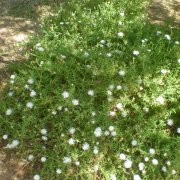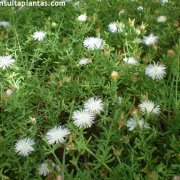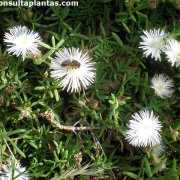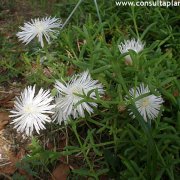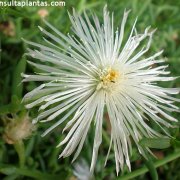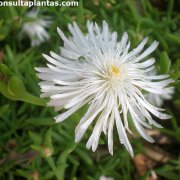Care of the succulent plant Aridaria brevicarpa or Day Desertfig |
|
The genus Aridaria, family Aizoaceae, includes 4 species of succulent plants native to southern Africa. The species are: Aridaria brevicarpa, Aridaria noctiflora, Aridaria vespertina and Aridaria semtina. Common name: Day Desertfig. Scientific synonym: Mesembryanthemum brevicarpum. This species is native to South Africa and Namibia. They are succulent plants with a bushy bearing that reach 1 meter (3.28 feet) in height. The fleshy cylindrical leaves are opposite and green in color. The showy and perfumed white or cream flowers contrast with the foliage; they open if they receive direct sunlight. They bloom in spring. Day Desertfig is used in rockeries, on dry slopes, to form groups, as isolated specimens and in pots for patios and terraces. It combines very well with other species of Mesembryanthemum. They are ideal for Mediterranean coastal gardens. Aridaria brevicarpa prefers full sun exposure but also grows in semi-shade. It resists very light and occasional frosts. Mesembryanthemum brevicarpum grows in any type of soil that has good drainage. Planting or transplanting is done in early spring. Always water moderately, waiting until the substrate has completely dried. They resist drought very well. Day Desertfig does not need fertilizers. Although it is not strictly necessary, it can be lightly pruned after flowering to maintain a compact appearance. Aridaria brevicarpa is a plant resistant to the usual pests and diseases but sensitive to excess humidity. Day Desertfig is propagated from seeds sown in spring and by cuttings outside the flowering season. |
Images of the succulent plant Aridaria brevicarpa or Day Desertfig |
Find plants
Aridaria brevicarpa or Day Desertfig | Care and Growing
© 2025 FavThemes
